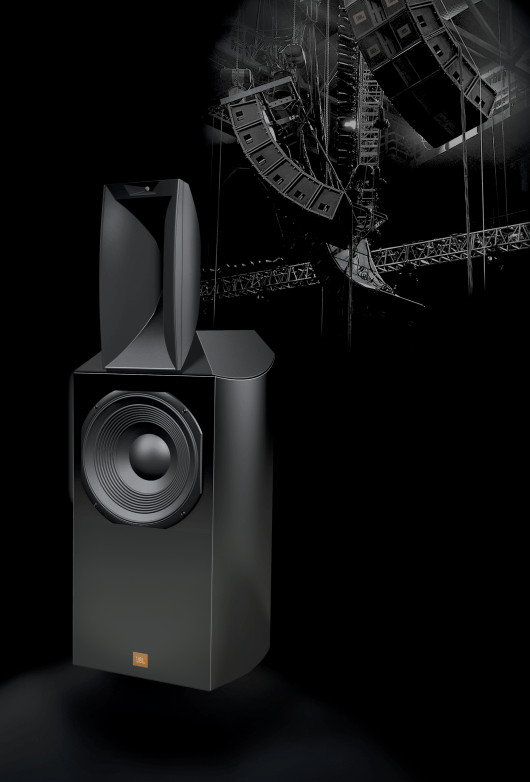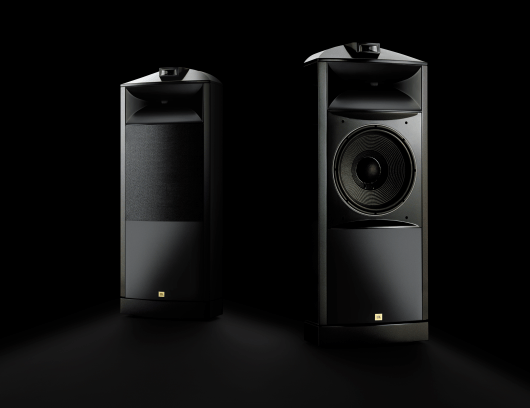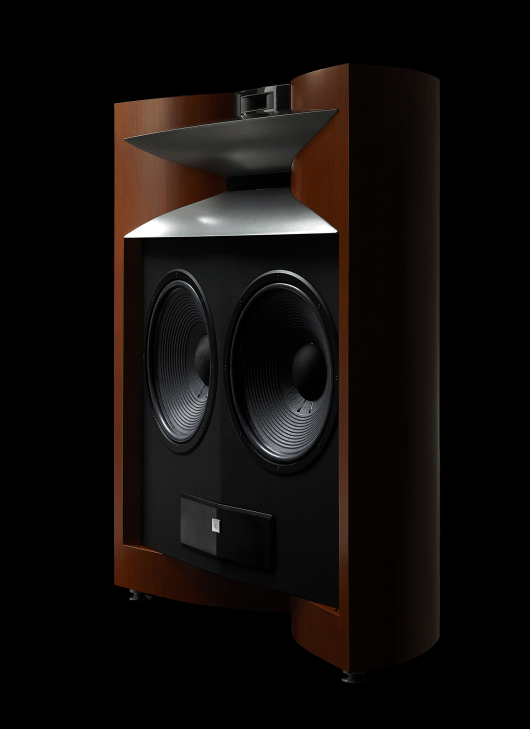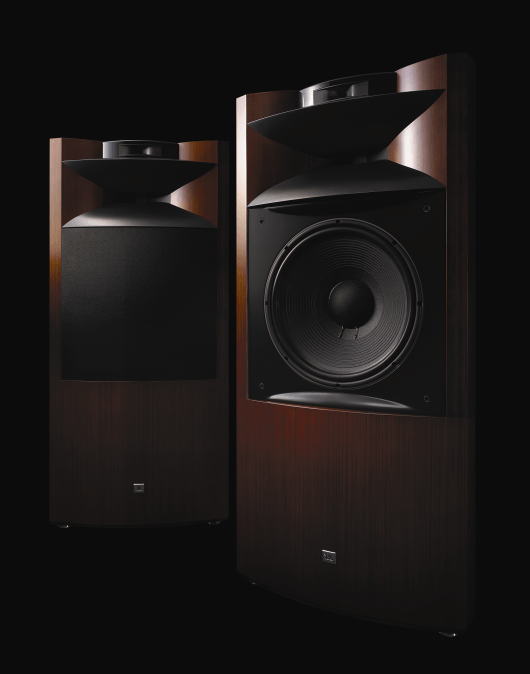Heritage
JBL’s founder helped motion pictures speak. From then on, we’ve been continuously advancing the science of high-fidelity sound reproduction, right on up to and including Synthesis Ultra. As the Jazz Singer put it back in 1928, “You ain’t heard nothin’ yet.”
- 1943 Flat-wire milling and high-speed winding of ribbon-wire voice coils developed.
- 1944 Lansing and Hilliard redefine the state of the art for motion picture theaters with the A-4, dubbed the “Voice of the Theatre.”
- 1946 James B. Lansing Sound, Inc. is formed.
- 1947 JBL produces the D-130 15″ loudspeaker, which was the first known use of a 4″ flat-wire coil in a cone transducer.
- 1954 JBL introduces the model 375 high-frequency compression driver. This is the first commercially available 4″ diaphragm driver, producing flat response to 9kHz.
- 1958 The cylindrical reflecting principle is present in the Paragon stereophonic loudspeaker system.
- 1962 JBL produces the first two-way studio monitor to use a high-frequency compression driver with acoustic lens.
- 1969 Harman International acquires JBL from William Thomas, and JBL embarks on a period of accelerated international growth through the Harman distribution companies.
- 1973 JBL unveils the first four-way studio monitor series, the 4300s.
- 1976 JBL monitors are ranked number one in the U.S. recording industry, in a survey conducted by Billboard.
- 1982 Titanium is first used as a diaphragm material in compression drivers. JBL 4675 direct-radiator systems, with constant directivity, set the performance standard for cinema loudspeakers.
- 1983 JBL is selected by Lucasfilm to develop the first commercial THX®-licensed cinema speaker system.
- 1984 The Academy of Motion Picture Arts and Sciences selects JBL components for the new sound system in the Samuel Goldwyn Theater.
- 1985 Harman International continues to take JBL’s growth to greater heights and new markets.
- 1989 The Directors Guild of America chooses JBL components for its headquarters building.
- 1990 JBL develops Vented Gap Cooling™ for raising the thermal power limits of low-frequency transducers.
- 1991 JBL introduces the first Pro Audio neodymium woofer, debuting in the JBL Array Series.
- 1992 JBL Synthesis® is released – the industry’s first completely equalized, processed, powered THX Home Media System.
- 1993 JBL develops new “rapid flare” low-distortion compression drivers and a matching family of horns.
- 1994 The JBL S2600 receives the highly coveted Golden Award and Stereo Sound COTY Award for its advanced technological execution and superior sonic performance.
- 1996 JBL’s Synthesis SDEC-1000 brings digital technology to its highest level for the benefit of the consumer.
- 2000 At 6,500 watts, the Synthesis Ultra system is the most powerful home theater system available, at any price.
- 2001 JBL releases the K2 S9800, employing the 435Be and 045Be pure-cast beryllium compression drivers.
- 2003 The JBL Synthesis S4A is the world’s first THX Ultra2™ in-wall, flush-mount, multipole loudspeaker.
- 2004 S4A is awarded the International CES Innovations Award.
- 2005 JBL’s Bernard Werner and William Gelow receive a Grammy Technical Achievement Award for “the engineering and design of filtered line arrays and screen spreading compensation as applied to motion picture speaker systems” as employed in JBL ScreenArray © cinema loudspeaker.
- 2006 JBL celebrates 60 years as the worldwide leader in audio reproduction. The new reference in JBL home audio performance – Project Everest.
- 2007 CES Best of Innovations Award: JBL Project Everest DD66000 Loudspeaker
- 2008 CES Innovations Award Honoree: JBL SDEC-4000 Digital Equalizer
- 2009 JBL Synthesis® One Multichannel Audio System is inducted into the CEDIA Product Hall of Fame. The JBL Synthesis® One was the world’s first complete, integrated multi-channel audio system designed specifically for custom installation home theater, and was the first system that enabled custom calibration to deliver optimum performance in any room.
- 2011 ARCOS Adaptive Room Correction and Optimization is offered for system design, to achieve a new level of accuracy for home audio.




